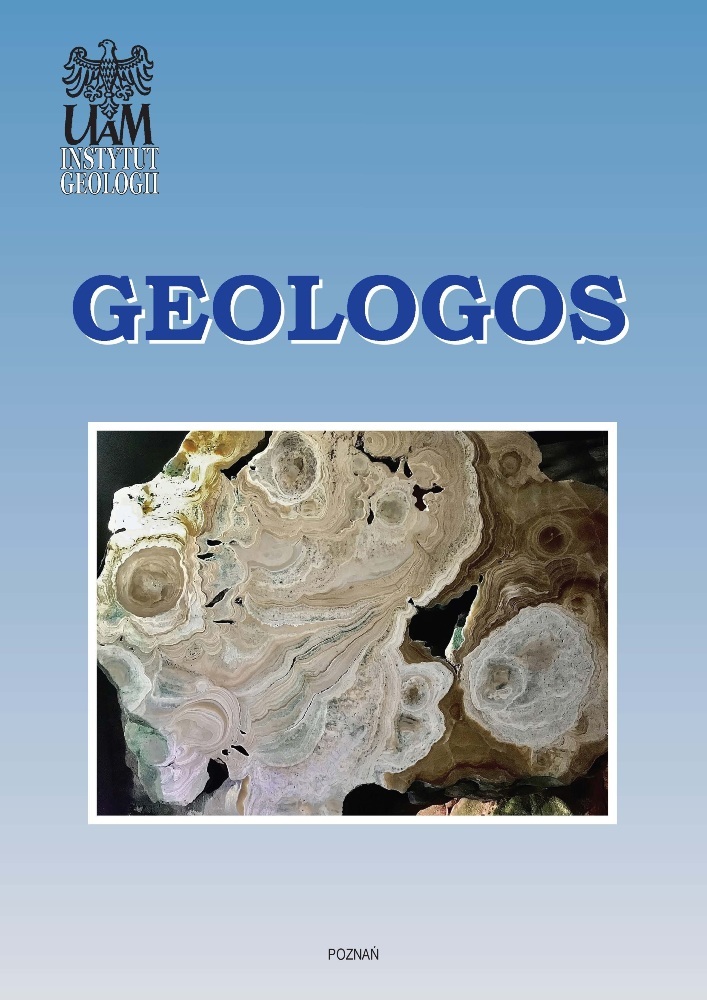Abstract
An overview is presented of scale problems in groundwater flow, with emphasis on upscaling of hydraulic conductivity, being a brief summary of the conventional upscaling approach with some attention paid to recently emerged approaches. The focus is on essential aspects which may be an advantage in comparison to the occasionally extremely extensive summaries presented in the literature. In the present paper the concept of scale is introduced as an indispensable part of system analysis applied to hydrogeology. The concept is illustrated with a simple hydrogeological system for which definitions of four major ingredients of scale are presented: (i) spatial extent and geometry of hydrogeological system, (ii) spatial continuity and granularity of both natural and man-made objects within the system, (iii) duration of the system and (iv) continuity/granularity of natural and man-related variables of groundwater flow system. Scales used in hydrogeology are categorised into five classes: micro-scale – scale of pores, meso-scale – scale of laboratory sample, macro-scale – scale of typical blocks in numerical models of groundwater flow, local-scale – scale of an aquifer/aquitard and regional-scale – scale of series of aquifers and aquitards. Variables, parameters and groundwater flow equations for the three lowest scales, i.e., pore-scale, sample-scale and (numerical) block-scale, are discussed in detail, with the aim to justify physically deterministic procedures of upscaling from finer to coarser scales (stochastic issues of upscaling are not discussed here). Since the procedure of transition from sample-scale to block-scale is physically well based, it is a good candidate for upscaling block-scale models to local-scale models and likewise for upscaling local-scale models to regional-scale models. Also the latest results in downscaling from block-scale to sample scale are briefly referred to.
References
Bear, J., 1979. Hydraulics of Groundwater. McGraw-Hill, New York, 592 pp.
Doherty, J., 2004. PEST: Model Independent Parameter Estimation. Watermark Numerical Computing, Brisbane, Australia
Idelman, P. & Dagan, G., 1993a. Upscaling permeability of anisotropic heterogeneous formations 1. The general framework, Water Resources Research 29, 917–923.
Idelman, P. & Dagan, G., 1993b. Upscaling permeability of anisotropic heterogeneous formations 2. General structure and small perturbation analysis, Water Resources Research 29, 925–933.
Idelman, P., 1993. Upscaling permeability of anisotropic heterogeneous formations 3. Applications, Water Resources Research 29, 935–943.
Klir, G.J., 1969. An Approach to General System Theory. Van Nostrand Reinhold, New York, 323 pp.
Nawalany, M., 1984. Groundwater as dynamical system. Scientific Works of Warsaw University of Technology 86, Warszawa.
Nawalany, M., 1987. FLOSA 3D, Introduction to system analysis of three-dimensional groundwater flow. Report of TNO Institute of Applied Geoscience OS 86-07, Delft.
Nawalany, M., 1999. Scale problem in hydrogeology. Bulletin of Polish Geological Institute 388, 179-190.
Peszyńska, M. & Trykozko, A., 2013. Pore-to-core simulations of flow with large velocities using continuum models and imaging data. Computational Geoscience 17, 623–645.
Trykozko, A., 2007. Computational aspects of up-scaling in heterogeneous porous media. Workshop: Modeling, Analysis and Simulation of Multiscale Nonlinear Systems, Oregon State University, USA.
Trykozko, A., 2010. Downscaling: fine-scale conductivity identification by inverse modelling. XVIII Conference Computational Modeling in Water Resources, Barcelona, Spain.
Trykozko, A. & Zijl, W., 2000. Finite Element Methods in numerical up-scaling of 3D permeability distributions. Conference Finite Elements in Flow, Austin, USA.
Trykozko, A., Brouwer, G. & Zijl, W., 2008. Down-scaling: a complement to homogenization. International Journal of Numerical Analysis and Modeling Suppl. 5, 157–170.
Trykozko, A., Mohammed, G.A. & Zijl, W., 2009. Down-scaling: the inverse of up-scaling. SIAM Conference on Mathematical and Computational Issues in the Geosciences, Leipzig, Germany.
Warren, J.E. & Price, H.S. 1961. Flow in Heterogeneous Porous Media. Society of Petroleum Engineers Journal 1, 153-169.
Zijl, W., 1993. Scale Analysis in Groundwater Hydrology. Monograph of Laboratory of Hydrology, Free University Brussels, Series VUB – Hydrologie 24, Brussels
Zijl, W., 1999. Scale aspects of groundwater flow and transport systems. Hydrogeology Journal 7, 139–150.
Zijl, W. & Nawalany, M., 1993. Natural Groundwater Flow. Lewis Publ. Comp., Boca Raton, London, Tokyo, 315 pp.
Zijl, W. & Trykozko, A., 1999. From fine-scale to coarse-scale permeability by numerical homogenization and volume averaging. Technical report of TNO, NITG (The Netherlands’ Institute of Geosciences Research) 99-4-B, Haarlem.
Zijl, W. & Trykozko, A., 2001. Numerical Homogenization of the Absolute Permeability Tensor Around a Well. SPE (Society of Petroleum Engineers) Journal 5, 399–408.
License
Copyright (c) 2015 Marek Nawalany, Grzegorz Sinicyn

This work is licensed under a Creative Commons Attribution-NonCommercial-NoDerivatives 3.0 Unported License.
